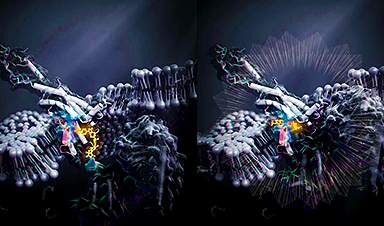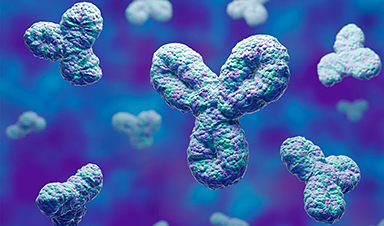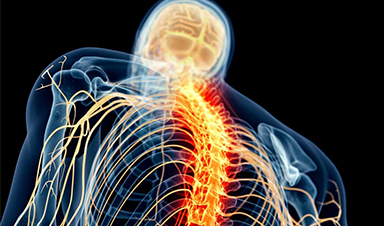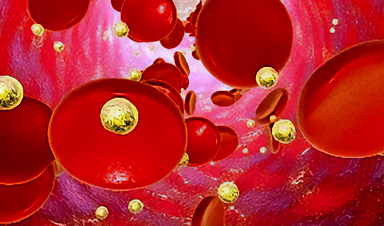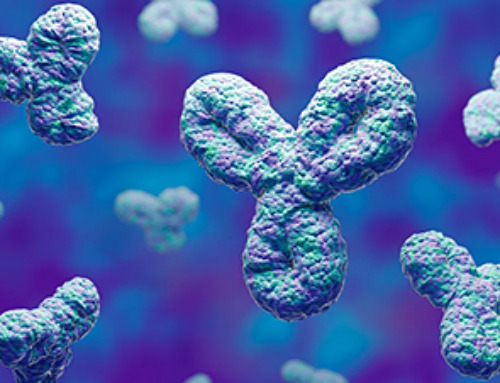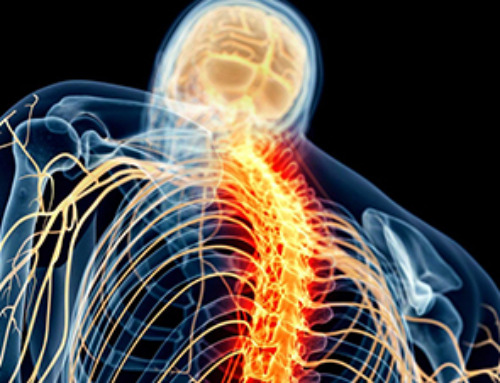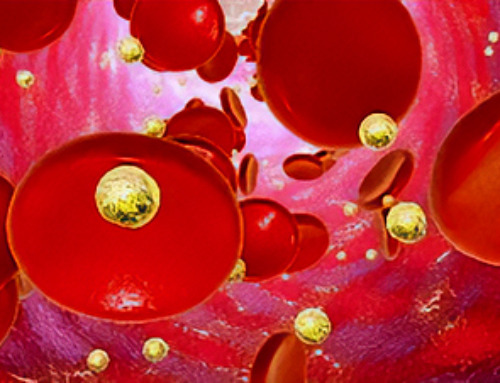Scientists have discovered a new way to activate G-protein coupled receptors from inside cells, a breakthrough that helps develop drugs without side effects.
Have you ever wondered how drugs reach their targets and achieve their function within our bodies? Imagine the drug molecule or ligand as a message, and the cell membrane receptor serving as the inbox. One such receptor tasked with transmitting molecular signals is the G protein-coupled receptor (GPCR).
Interestingly, around one-third of all existing drugs work by controlling the activation of this protein. Japanese researchers now reveal a new way of activating GPCR by triggering shape changes in the intracellular region of the receptor. This new process can help researchers design drugs with fewer or no side effects.
If the cell membrane is like an Oreo cookie sandwich, GPCR is like a snake with seven segments traversing in and out of the cookie sandwich surface. The extracellular loops are the inbox for messages. When a message molecule binds to the extracellular side of the receptor, it triggers a shape change activating G proteins and the ß-arrestin protein attached to the intracellular side of the receptor. Like a molecular relay, the information passes downstream and affects various bodily processes. That is how we see, smell, and taste, which are sensations of light, smell, and taste messages.
A team of researchers headed by Osamu Nureki, a professor at the University of Tokyo, and his lab, discovered a new receptor activation mode of a bone metabolism-related GPCR called human parathyroid hormone type 1 receptor (PTH1R) without signal transduction from the extracellular side.
“Understanding the molecular mechanism will enable us to design optimal drugs,” says Kazuhiro Kobayashi, a doctoral student and an author of the study. Such a drug offers “a promising treatment for osteoporosis.”
Kobayashi has been conducting research on bone formation in animal models since he was an undergrad. “Treatments for osteoporosis that target PTH1R require strict dosage, have administrative restrictions, and there aren’t yet any better alternatives,” he says. That motivated their team to look for better drug design strategies targeting the parathyroid hormone receptor.
To understand function through structure, they used cryo-electron microscopy and revealed the 3D structure of the PTH1R and G protein bound to a message molecule. The team synthesized a non-peptide message molecule called PCO371 which binds to the intracellular region of the receptor and interacts directly with G protein subunits. In other words, PCO371 activates the receptor after entering the cell.
The PCO371-bound PTH1R structure can directly and stably modulate the intracellular side of PTH1R. And because PCO371 activates only G protein and not ß-arrestin it does not cause side effects. This specificity of its binding and receptor activation mode makes it a suitable candidate for potential small-molecule-based drugs for class B1 GPCRs, like PTH1R, which currently lack oral administrative drug ligands. Such drugs would have reduced adverse effects and burdens on patients as they act on specific molecular pathways.
The findings from this study will help “develop new drugs for disorders such as obesity, pain, osteoporosis, and neurological disorders.”
Reference: “Class B1 GPCR activation by an intracellular agonist” by Kazuhiro Kobayashi, Kouki Kawakami, Tsukasa Kusakizako, Atsuhiro Tomita, Michihiro Nishimura, Kazuhiro Sawada, Hiroyuki H. Okamoto, Suzune Hiratsuka, Gaku Nakamura, Riku Kuwabara, Hiroshi Noda, Hiroyasu Muramatsu, Masaru Shimizu, Tomohiko Taguchi, Asuka Inoue, Takeshi Murata and Osamu Nureki, 7 June 2023, Nature.
DOI: 10.1038/s41586-023-06169-3
News
Specially engineered antibody delivers RNA therapy to treatment-resistant tumors
Elias Quijano, PhD; Diana Martinez-Saucedo, PhD; Zaira Ianniello, PhD; and Natasha Pinto-Medici, PhD, there are 25 other contributors, most from Yale's Department of Therapeutic Radiology and from the departments of genetics, molecular biophysics and [...]
Vaccinated women face fewer cervical cancer risks
New data from Denmark shows the HPV vaccine’s powerful long-term impact, while also revealing why cervical cancer screening is still essential. A Danish study published in the journal Eurosurveillance reports that women who received the human [...]
3D-printed implant offers a potential new route to repair spinal cord injuries
A research team at RCSI University of Medicine and Health Sciences has developed a 3-D printed implant to deliver electrical stimulation to injured areas of the spinal cord, offering a potential new route to [...]
Nanocrystals Carrying Radioisotopes Offer New Hope for Cancer Treatment
The Science Scientists have developed tiny nanocrystal particles made up of isotopes of the elements lanthanum, vanadium, and oxygen for use in treating cancer. These crystals are smaller than many microbes and can carry isotopes of [...]
New Once-a-Week Shot Promises Life-Changing Relief for Parkinson’s Patients
A once-a-week shot from Australian scientists could spare people with Parkinson’s the grind of taking pills several times a day. The tiny, biodegradable gel sits under the skin and releases steady doses of two [...]
Weekly injectable drug offers hope for Parkinson’s patients
A new weekly injectable drug could transform the lives of more than eight million people living with Parkinson's disease, potentially replacing the need for multiple daily tablets. Scientists from the University of South Australia [...]
Most Plastic in the Ocean Is Invisible—And Deadly
Nanoplastics—particles smaller than a human hair—can pass through cell walls and enter the food web. New research suggest 27 million metric tons of nanoplastics are spread across just the top layer of the North [...]
Repurposed drugs could calm the immune system’s response to nanomedicine
An international study led by researchers at the University of Colorado Anschutz Medical Campus has identified a promising strategy to enhance the safety of nanomedicines, advanced therapies often used in cancer and vaccine treatments, [...]
Nano-Enhanced Hydrogel Strategies for Cartilage Repair
A recent article in Engineering describes the development of a protein-based nanocomposite hydrogel designed to deliver two therapeutic agents—dexamethasone (Dex) and kartogenin (KGN)—to support cartilage repair. The hydrogel is engineered to modulate immune responses and promote [...]
New Cancer Drug Blocks Tumors Without Debilitating Side Effects
A new drug targets RAS-PI3Kα pathways without harmful side effects. It was developed using high-performance computing and AI. A new cancer drug candidate, developed through a collaboration between Lawrence Livermore National Laboratory (LLNL), BridgeBio Oncology [...]
Scientists Are Pretty Close to Replicating the First Thing That Ever Lived
For 400 million years, a leading hypothesis claims, Earth was an “RNA World,” meaning that life must’ve first replicated from RNA before the arrival of proteins and DNA. Unfortunately, scientists have failed to find [...]
Why ‘Peniaphobia’ Is Exploding Among Young People (And Why We Should Be Concerned)
An insidious illness is taking hold among a growing proportion of young people. Little known to the general public, peniaphobia—the fear of becoming poor—is gaining ground among teens and young adults. Discover the causes [...]
Team finds flawed data in recent study relevant to coronavirus antiviral development
The COVID pandemic illustrated how urgently we need antiviral medications capable of treating coronavirus infections. To aid this effort, researchers quickly homed in on part of SARS-CoV-2's molecular structure known as the NiRAN domain—an [...]
Drug-Coated Neural Implants Reduce Immune Rejection
Summary: A new study shows that coating neural prosthetic implants with the anti-inflammatory drug dexamethasone helps reduce the body’s immune response and scar tissue formation. This strategy enhances the long-term performance and stability of electrodes [...]
Scientists discover cancer-fighting bacteria that ‘soak up’ forever chemicals in the body
A family of healthy bacteria may help 'soak up' toxic forever chemicals in the body, warding off their cancerous effects. Forever chemicals, also known as PFAS (per- and polyfluoroalkyl substances), are toxic chemicals that [...]
Johns Hopkins Researchers Uncover a New Way To Kill Cancer Cells
A new study reveals that blocking ribosomal RNA production rewires cancer cell behavior and could help treat genetically unstable tumors. Researchers at the Johns Hopkins Kimmel Cancer Center and the Department of Radiation Oncology and Molecular [...]
